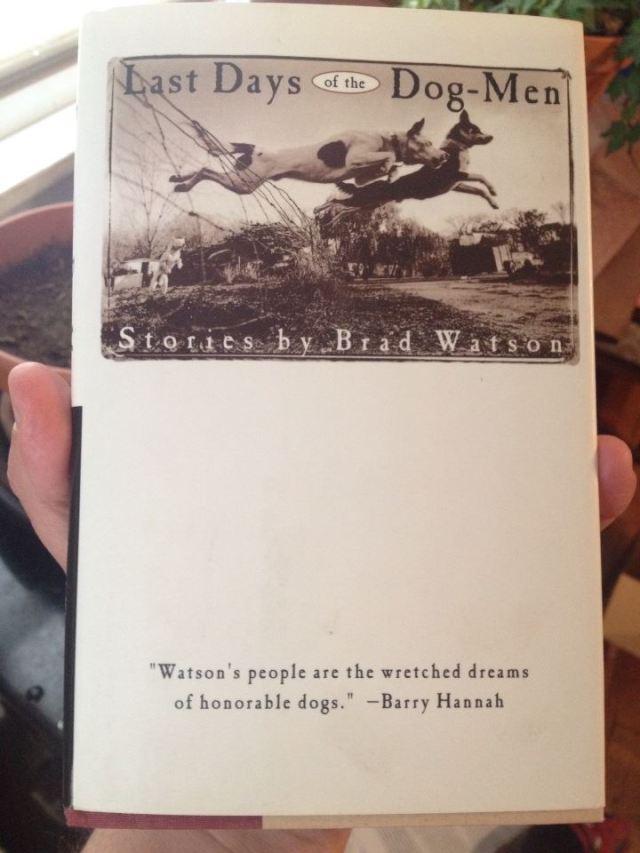Greetings from AWP in Los Angeles! I’m blogging this from the book fair, which is live and crowded and overwhelming and wonderful! If you’re here, come by the Moon City Press/Moon City Review table, Table #858, all the way at the end of the 800s, over by the stage, bathroom, and little food-selling station. I’ve already run into so many tremendous writers and friends, including Dave Housley, the subject of yesterday’s post, just a few minutes ago (remember, 10 percent off his autograph if you mention this blog). It’s a blitzkrieg of smiles and hugs and good will.
Since I checked in yesterday, I’ve had quite a few adventures. Right after, I wandered out to get a haircut. For a few reasons that make me silly, I’m not staying anywhere near the Convention Center, but am in Beverly Hills. So, I put “haircut” into Google Maps outside my hotel, but was not hopeful: A haircut would cost me $200 in Beverly Hills, plus an extra $100 for not having a little dog in a purse. Yet, Google Maps was generous and showed a Supercuts just a half a mile away. I walked there—expected solid gold hair driers and scissors and stuff—but really, it was a normal Supercuts with normal Supercuts prices. The person who greeted me and cut my hair, Topaz, was surprised that I was surprised there was a Supercuts in Beverly Hills. Still, when she asked if I wanted, for an additional $7, the shampoo and scalp massage, I was all over it. As soon as she was done cutting my hair, my $7 paid off, as Topaz was working out all the tension, the same tension that probably is making my hair fall out; for a day, I would hold the line.
As I was in that chair, having a stranger rub my forehead for money, I realized I was having a little bit of a spa day … in Beverly Hills! I relished the ten minutes I was in that chair, and the $42 I spent, including a $10 tip, was well worth it. The moral of the story is, if you’re looking for a getaway during AWP, the Supercuts on Olympic in Beverly Hills is a pretty sweet option.
It’s in-between sessions now and while there’s a lull in traffic, I should write about Amelia Gray and Gutshot, the fourth installment in Short Short Week (which, uncoincidentally, has aligned with AWP Week). Gutshot is Gray’s second book of shorts, after the tremendous Museum of the Weird, a book that I’ve studied, taught, and based my own book of short shorts (I Will Love You for the Rest of My Life) on. I really love how Museum of the Weird tells so many stories, so many different stories, so well. It’s really a model of what a short short book should be, and with Gutshot—the follow-up to Gray’s highly successful novel Threats—Gray picks up right where she left off.
My favorite of all the stories in Gutshot, “Thank You,” chronicles a correspondence between two acquaintances, one of whom has sent a thank you card to the protagonist. For what, we don’t know, but the protagonist is so stricken by the thoughtfulness of the gesture, she decides to write a thank you note back. Pretty odd, to write a thank you card for a thank you card, but Gray gets pretty deeply into her protagonist’s head, and it makes sense—she’s that appreciative. If only everyone in the world was so kind.
From there, the thank yous escalate. The other woman replies, sending a packet of cherry bombs and a plate engraved “THANK YOU.” I don’t get the cherry bombs, but I don’t think I’m supposed to. The protagonist bakes a cake and mails it back, which is weird, as well, because you really shouldn’t mail cakes in a box stuffed with newspaper. With each reply, the offerings become exponentially more audacious, as the woman follows the cake with a tube full of white mice. Nothing on the mice says, “Thank you,” “on” being the key word—when the mice crap, each moves its excrement to form a different letter of the phrase. To note, this absurdity does not end the exchange, nor does it cap the levels in which the women will go to outdo each other. None of it is out of spite, or even competition: When someone does you a kindness, it’s just good manners to match that kindness. And then some. The back-and-forth escalates to a perfect, funny wonderful denouement.
I could have written on any number of the stories in Gutshot, as Gray offers up a variety, to be sure, covering the most eclectic topics, forms, and styles. There’s a story called “Fifty Ways to Eat Your Lover” where Gray writes fifty sentences, all of the same exact structure, as in: “When he buys you a drink, plunge a knife into his nose and carve out a piece.” and “When He gives you a book he likes, dip him into a deep fryer.” That’s the story, fifty of those. A different piece, “Device,” is about an inventor, his time machine, and how it ruins his life. So many of the stories are surreal, strange, capturing moments, instances even, in its characters’ lives. They are all unique—to each other, to anything I’ve read—and aren’t always immediately discernible, but they all have an energy about them, making me read one after another, every piece a small miracle transgressed in two to five pages. Gray is a huge talent, one of the masters, working in this small form.
This post has actually taken me most of the day, as we had a couple of signings at the table, and nice new writer friends keep coming by to see what Moon City is all about. I’ve also gotten a lot of compliments on my new do, further proof that a Beverly Hills Supercuts spa day can work miracles.










